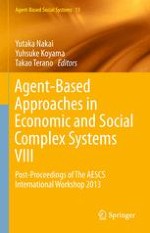Agent-based modeling/simulation is an emergent approach to the analysis of social and economic systems. It provides a bottom-up experimental method to be applied to social sciences such as economics, management, sociology and politics as well as some engineering fields dealing with social activities. This book includes selected papers presented at the Eighth International Workshop on Agent-Based Approaches in Economic and Social Complex Systems held in Tokyo, Japan, in 2013. At the workshop, 23 reviewed full papers were presented and of those, 13 were selected to be included in this volume.
